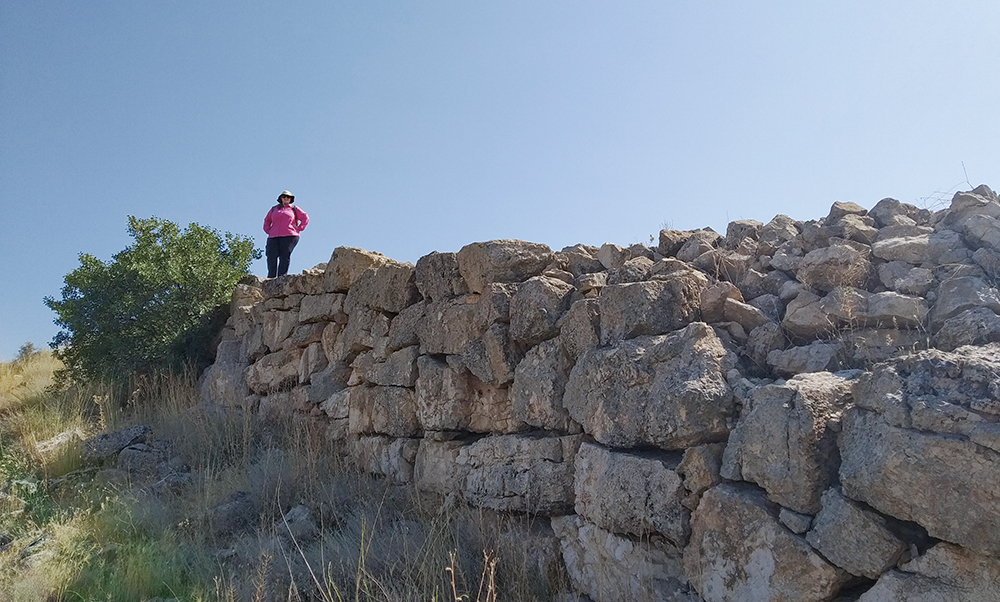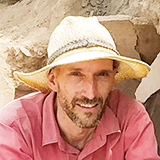May 2020 | Volume 21 No. 2
Lessons from the Past
The five-year programme marks the beginning of a collaborative research partnership between HKU and the Institute of Archaeology and Ethnography of the Republic of Armenia’s National Academy of Sciences, as well as multiple cross-faculty collaborations within HKU.
“Our international project seeks to apply interdisciplinary approaches to the study of the ancient world,” said Dr Peter J Cobb, Assistant Professor in the Faculties of Education and Arts, who is leading the project in collaboration with Artur Petrosyan and Boris Gasparyan of the Armenian Institute. The trio developed the Ararat Plain Southeast Archaeological Project (APSAP) to advance knowledge about human life and mobility in the Vedi river valley, a tributary valley to the Ararat Plain located south of Yerevan, Armenia’s capital. The Institute’s Hayk Azizbekyan coordinates all on-the-ground activities for the project.
Shared heritage
“The Ancient Near East is central to our shared human heritage as the region of the world that saw many firsts in societal complexity – from agriculture to writing and cities,” said Dr Cobb. “The Vedi river valley connects the plain and the mountains as an important sub-route within larger historical networks like the Silk Road. Our main site, the Vedi Fortress, controlled local traffic from its central position in the valley. Protected on most sides by cliff faces, the site’s gentle northwestern approach is defended by two lines of massive fortification walls, likely dating to the Late Bronze Age (circa 1500–1150 BCE).”
Despite this rich history, the Vedi river valley and its environs have seen comparatively less archaeological attention than other surrounding regions, which means the project presents a unique opportunity to explore new chronological and theoretical questions. The programme collects and analyses data using the latest accurate and efficient digital tools and methods – one more important focus of innovative cross-disciplinary cooperation.
“We are collaborating with Professor Wenping Wang from the Faculty of Engineering to explore the latest technologies for rapidly 3D scanning and precisely analysing the shapes of ancient objects, especially ceramics,” said Dr Cobb.
In addition, the project has sparked an interdisciplinary knowledge exchange initiative called ‘Digging the Past Together: International Public Engagement in Near Eastern Archaeological Research’. This initiative brings together faculty members from Engineering, Architecture and Social Sciences, in addition to Education and Arts, and also activates multiple international partnerships.
“I am working with Dr Tom McDonald of Social Sciences to supervise a student social media specialist who will help engage the public in conversations about archaeology,” said Dr Cobb. “We are particularly interested in introducing Near Eastern archaeology to East Asian audiences. To create content for our outreach efforts, we have partnered with Dr Serkan Şavk of the Izmir University of Economics’ Department of Cinema and Digital Media. His team is currently developing short films from the first season to introduce our fieldwork and invite the public to participate in our research.
“We are also working with Dr Zhu Xu of Architecture to bring an architecture student on to our project to create 3D reconstructions of our site. These models will help the public visualise the past. In addition, we are developing educational activities for schoolchildren in Armenia. This outreach will take place through partnerships with Ms Ani Avagyan and the National Gallery of Armenia and Dr Caitlin Curtis of the University of Wisconsin-Parkside. As part of the Gallery’s summer cultural heritage programme, groups of Armenian children will visit our fieldwork site during the summer, where HKU students will help them learn about archaeology. Through all these knowledge exchange efforts, we hope to increase the impact of our archaeological research on contemporary society.”

The outer massive fortification wall of the Vedi Fortress is likely to be over 3,000 years old.

A team from the Izmir University of Economics filming the archaeological fieldwork to share with a public audience.
(Courtesy of Yadian Wang)
Initial foray
APSAP’s first season took place last summer when a team – which included HKU students from Arts, Architecture and Social Sciences, as well as undergraduates from universities in the United States, Turkey and Armenia – made their initial foray to the Vedi Fortress, a site which had not previously been subject to scientific archaeological excavation. The main discoveries included fragments of ceramic vessels and the remains of stone architecture, which will be analysed to develop a clearer picture of how people lived in this landscape in the past.
“Pottery styles inform us about the time periods when sites were occupied, and how sites in the landscape communicated with each other,” said Dr Cobb. “We map the architectural remains to better understand the urban configuration of the site, thus revealing where people lived, what they did in each space, and how they moved from place to place.”
The Armenia field project has now become an official credit-bearing undergraduate course ‘Cultural Heritage and Information in the Field’. The class will enable students to gain experience with field archaeology, to learn about the Ancient Near East, and to develop new skills in digital humanities technologies and information management during a complex data collection project.
Groups of Armenian children will visit our fieldwork site during the summer, where HKU students will help them learn about archaeology. Through all these knowledge exchange efforts, we hope to increase the impact of our archaeological research on contemporary society.

DR PETER J COBB

